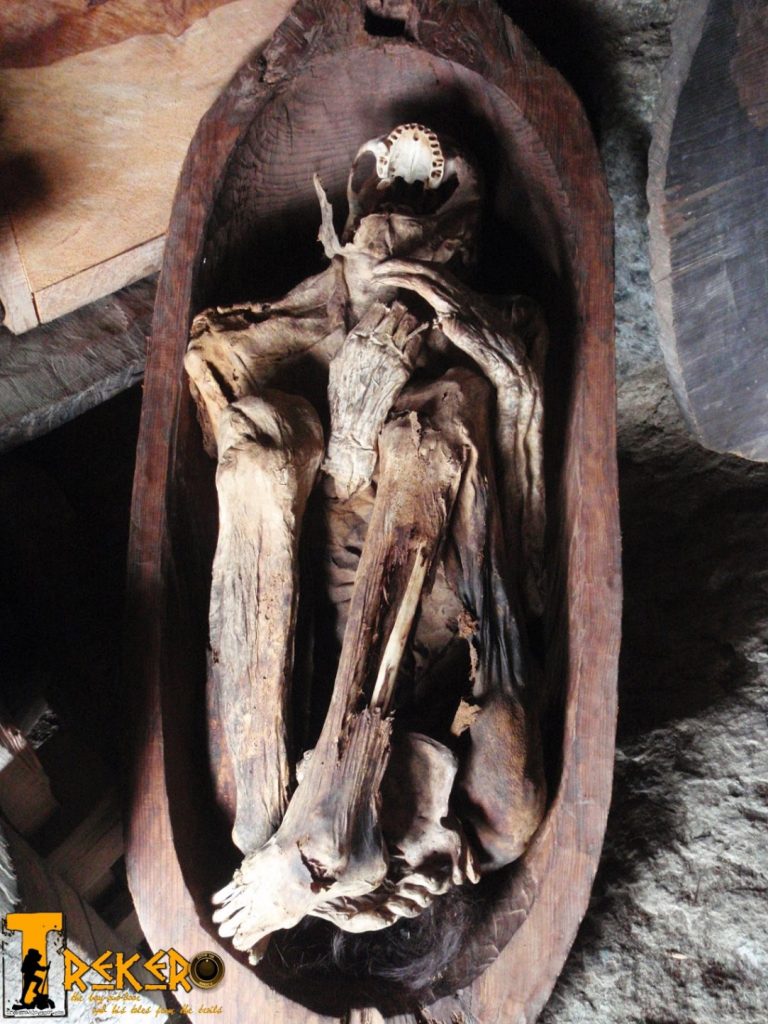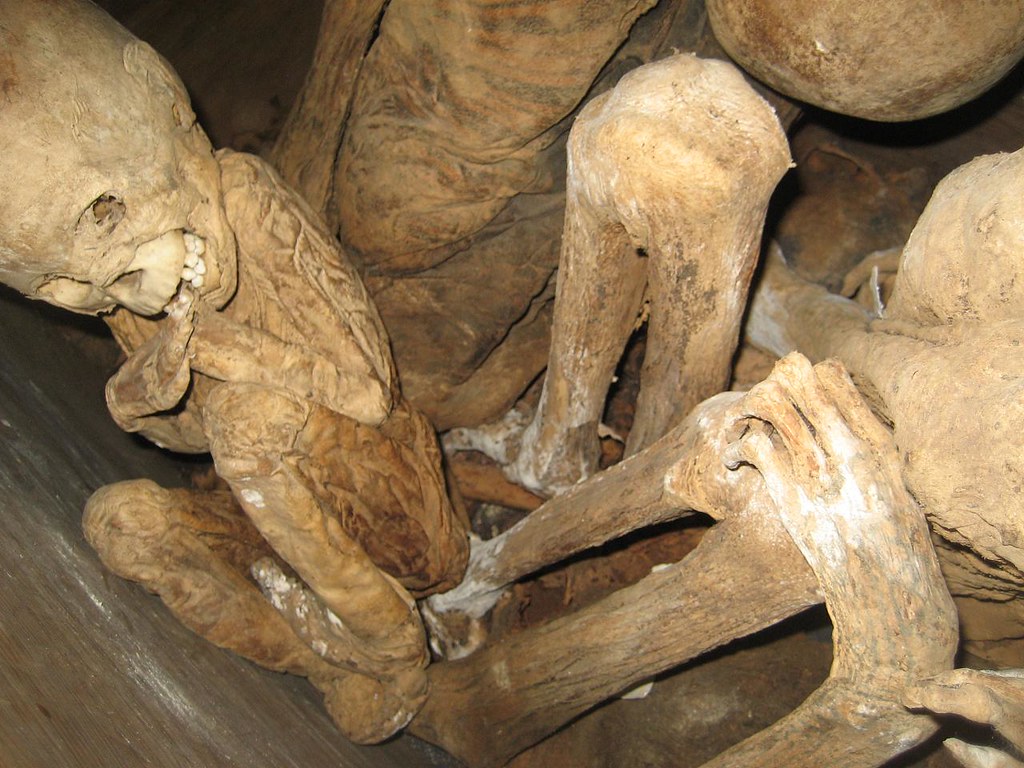La momificación de los difuntos es una práctica muy conocida desde la antigüedad. En particular, los egipcios utilizaron un proceso de momificación que condujo a la imagen cliché actual de un cuerpo fallecido cubierto con envolturas de gasa. El descubrimiento de restos momificados en varias cuevas de Filipinas representa un tipo diferente de momia: la momia de fuego.
Encontradas en cuevas de la ciudad de Kabayan, en la provincia de Benguet de Filipinas, las momias de las cavernas de fuego de Kabayan son restos humanos que se conservaron mediante un largo proceso de deshidratación y ahumado. Estos restos bien conservados han dado a los investigadores información sobre un proceso de momificación único y sobre los pueblos tribales que utilizaron esos métodos.

El intrincado proceso de momificación: de las bebidas saladas al humo del tabaco
The Kabayan mummies are also known as the Ibaloi mummies, Benguet mummies, or Fire mummies. They were located in many caves in the area, including Timbak, Bangao, Tenongchol, Naapay, and Opdas.
Smoking is not a common mummification technique, and it was a very lengthy process, but it was successfully used to preserve many bodies throughout the years. Scientists have estimated that the Kabayan mummies were created by members of the Ibaloi tribe sometime between 1200 and 1500 AD. The timeline is debated, as some scientists have speculated that the mummification practice dates back thousands of years. While the date that the practice began is in dispute, there is agreement that it ended in the 1500s. When Spain colonized the Philippines, the smoking mummification process died out, and was no longer practiced.

It is believed by some that only tribal leaders were mummified through smoking. The unique mummification process was said to actually begin before death, with an individual participating in the initial steps.
As death approached, the individual would drink a beverage with a very high concentration of salt. Drinking saltwater is known to dehydrate the body, so this initial step was used to start the drying process prior to death. After the individual passed away, the rest of the mummification process would take place. It is estimated that this process took anywhere from several weeks, to several months to complete.
The body was thoroughly washed, and then placed above a heat source in a seated position. The body was not exposed to actual fire or flames, but remained suspended above the smoldering kindling. Rather than burning the body, the heat and smoke would slowly and completely dehydrate the entire body. The internal drying process was ritually furthered along by blowing tobacco smoke into the deceased’s mouth. This was thought to help to remove all fluids from the internal organs.

Finally, the smoked body was rubbed down with herbs. Upon completion of the mummification process, the body was placed in one of the caves, where they were eventually discovered.
The Precarious State of the Kabayan Cave Mummies: Theft and Vandalism Concerns
To this day, the Kabayan mummies remain in the caves within which they were found. Although the caves are located in a very remote area, theft and vandalism are very real concerns, leading the area to be designated as one of the 100 Most Endangered Sites in the world, by Monument Watch. It is also under consideration to be designated as a UNESCO World Heritage Site.
Una momia distinguida, conocida como Apo Annu, fue robada de las cuevas a principios del siglo XX. Apo Annu estaba vestido con ropa que habría usado un jefe tribal y estaba agachado. Su cuerpo momificado estaba cubierto de intrincados tatuajes. Se considera que Apo Annu fue un gran cazador y se creía que era mitad humano, mitad deidad. Finalmente, Apo Annu fue devuelto a la tribu Ibaloi. Deseaban mucho el regreso de Apo Annu, porque creían que su ausencia causaba muchos desastres naturales, incluidos terremotos, sequías, enfermedades y malas cosechas.
Tras el regreso de Apo Annu, los Ibaloi volvieron a enterrar la momia con la esperanza de restablecer el equilibrio que había sido interrumpido por su desaparición. Hoy en día, todavía hay varias momias robadas de Kabayan que aún no han sido devueltas; sin embargo, el regreso de Apo Annu indica el deseo de mantener las momias en los lugares de entierro que les corresponden.





